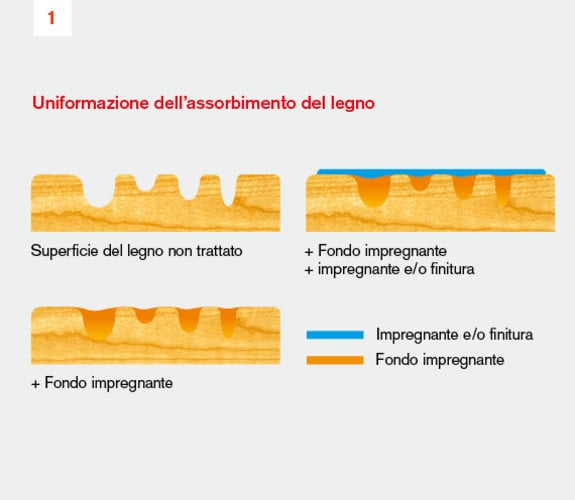
HOW TO PROTECT WOOD FROM BIOLOGICAL ATTACK?
BASIC BIOLOGICAL PROTECTION
Wood placed outdoors or in particularly damp conditions can be attacked by fungus, mould or insects. The right protection must be chosen to guarantee such wooden structures a long life.


For effective biological protection it is always advisable to use a protective primer (e.g. Lignex Grund BPIv or Hydrogrund Plus) as an undercoat in each varnishing treatment. Protective primers have a number of functions:
- Their particularly liquid formula enables the wood to absorb the active ingredient to great depth thus providing better protection from attack by destructive and discolouring fungus, mould and insects.
- They are colourless and guarantee that each subsequent coating will be evenly absorbed, for an excellent aesthetic effect. (See picture 1)
- In wood treated with film-forming systems, damp can penetrate through cracks in the varnish film created by movement of the wood. This damp then propagates within the wood and, as it seeks new escape routes, it causes the film to swell, detach and peel off. Protective primers regulate the air/moisture exchange, leading to less propagation of the damp so that the varnish is less likely to peel off. (See picture 2)

